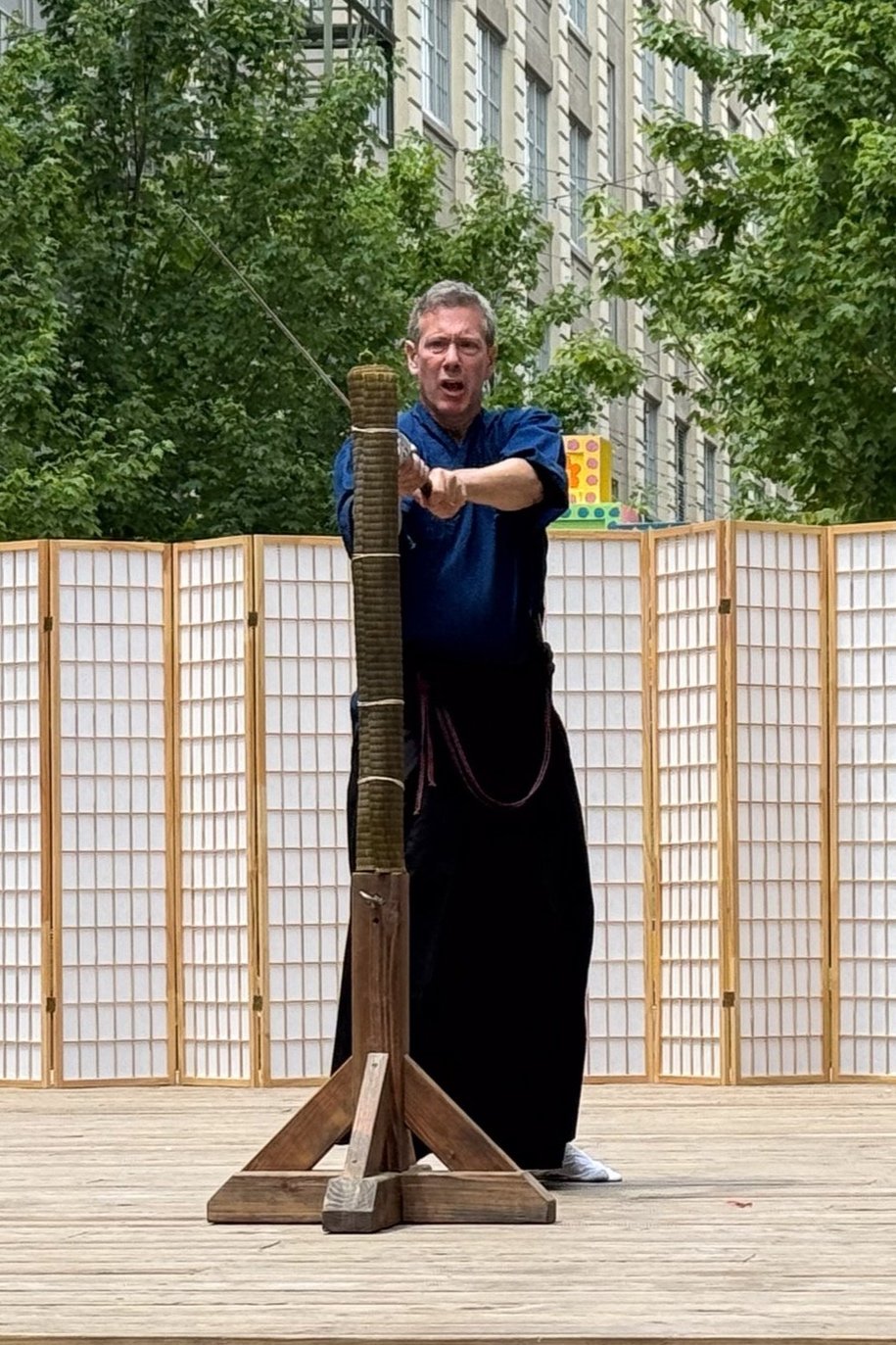Mind Over Mat(ter): Learning the Art of Tameshigiri
By LK Lohan
Even if you have been practicing the martial arts for a while; even if you have a decent amount of proprioception, once there's a weapon in your hand, the game changes. All of a sudden, you’re tasked with integrating an inanimate object into a dynamic and very animate system, namely your body moving through space. Add resistance to that equation and the challenge increases exponentially.
In battōdō, this resistance is provided either by an alert and thoughtful training partner (in which case, obviously, you’re working with blunt swords), or by a rank and soggy, rolled-up, old tatami mat.
In tameshigiri (試斬), the practitioner wields a very real and very sharp sword (shinken 真剣) with the firm intent of cutting the unsuspecting mat to pieces. It’s at this point that said mat morphs into a vicious, merciless enemy, bent on decimating a poor beginner's self-esteem and misplaced pride (ask me how I know).
Occasionally, this implacable opponent can be overwhelmed with sheer power, but it won't be a pretty sight. In the hands of an experienced practitioner, however, tameshigiri becomes an art form, a meticulously timed, perfectly aligned symphony of efficiency, effortless power, and grace.
For this to happen, several elements need to be in place. Concurrently, the seven commandments of Tameshigiri:
Correct internal and external structure. The sword needs to become an integral part of the body structure, with the hips (tanden, 丹田, and koshi, 腰) stable and in alignment with the path of the sword, and the arms in dynamic extension at the point of contact with the mat.
Correct distancing (maai 間合い). A cut is best executed with the monouchi (物打), roughly the first third of the blade below the tip. This means that the practitioner needs to be positioned at the right distance from the mat.
Correct technique. Ideally, there is no extraneous movement, only the most direct and efficient path to cutting the mat.
Correct blade angle (hasuji 刃筋). This isn't the angle of the cut, but the angle of the blade itself. Just as the angle of the knife matters as you cut into your steak, the sword will only cut the mat if it enters at the correct angle.
Correct blade trajectory (kakudo 角度). Not only should the cut be circular (enkeisen, 円形線), it also matters where in space this circle is placed, so the cutting edge will contact the mat at the intended spot and the intended angle.
Correct power. There is a sweet spot, where the practitioner exerts enough power to keep the blade steadily moving throughout the entire cut, especially when it meets the resistance of the mat. Too little power, and the sword will not cut all the way through, even if the other components are in place. Too much, however, and stopping the blade after a successful cut (or executing follow up movements) becomes more difficult.
Correct mindset (zanshin 残心). The practitioner is aware of their surroundings but maintains focus on the mat and the cut to be accomplished. The cuts that came before don’t matter, nor do the ones that will come later.
Once all these elements (and probably a few more that I don't yet even know about) are in place, you will win the battle and vanquish the demon mat. Or so I'm told.

